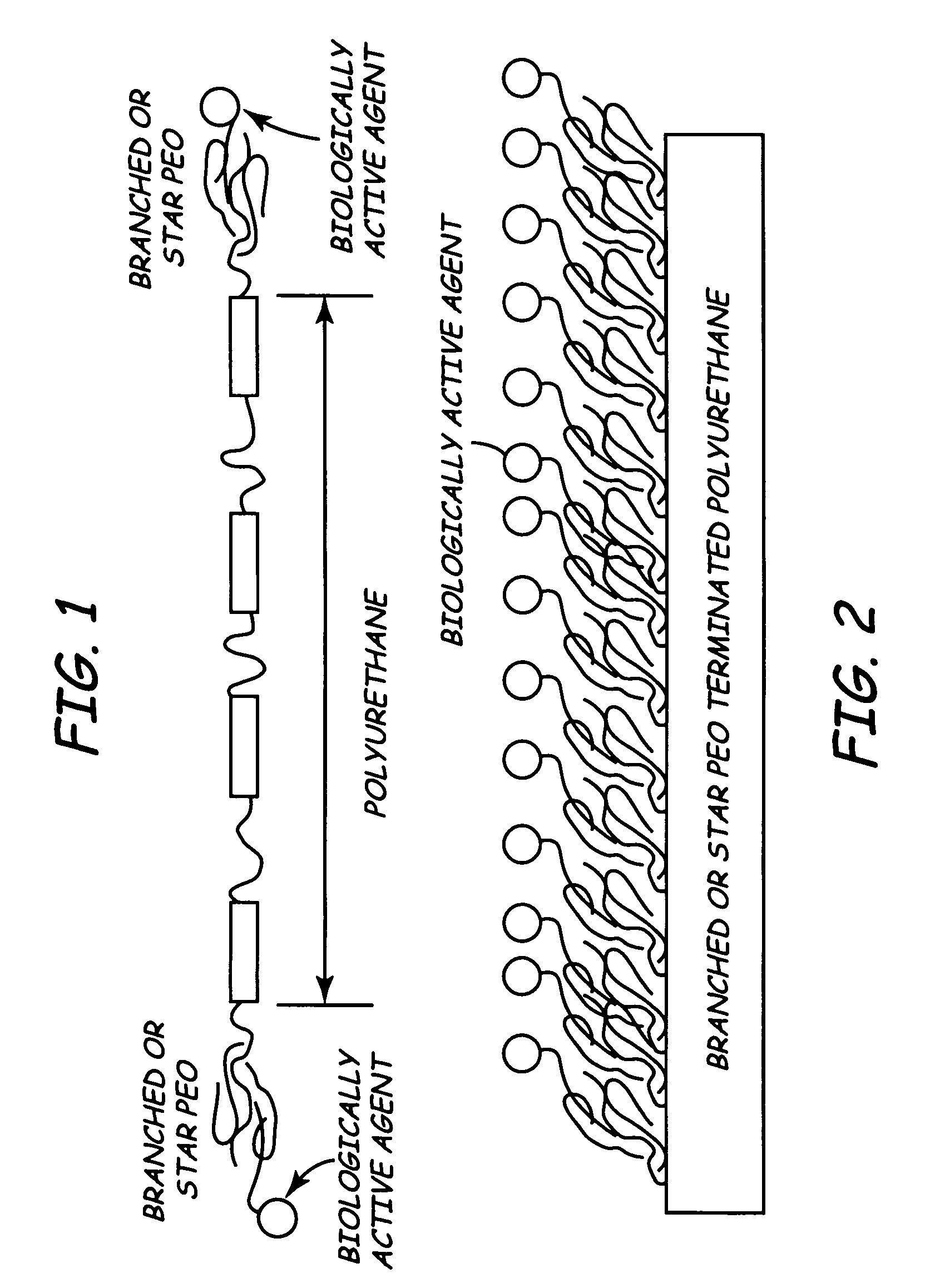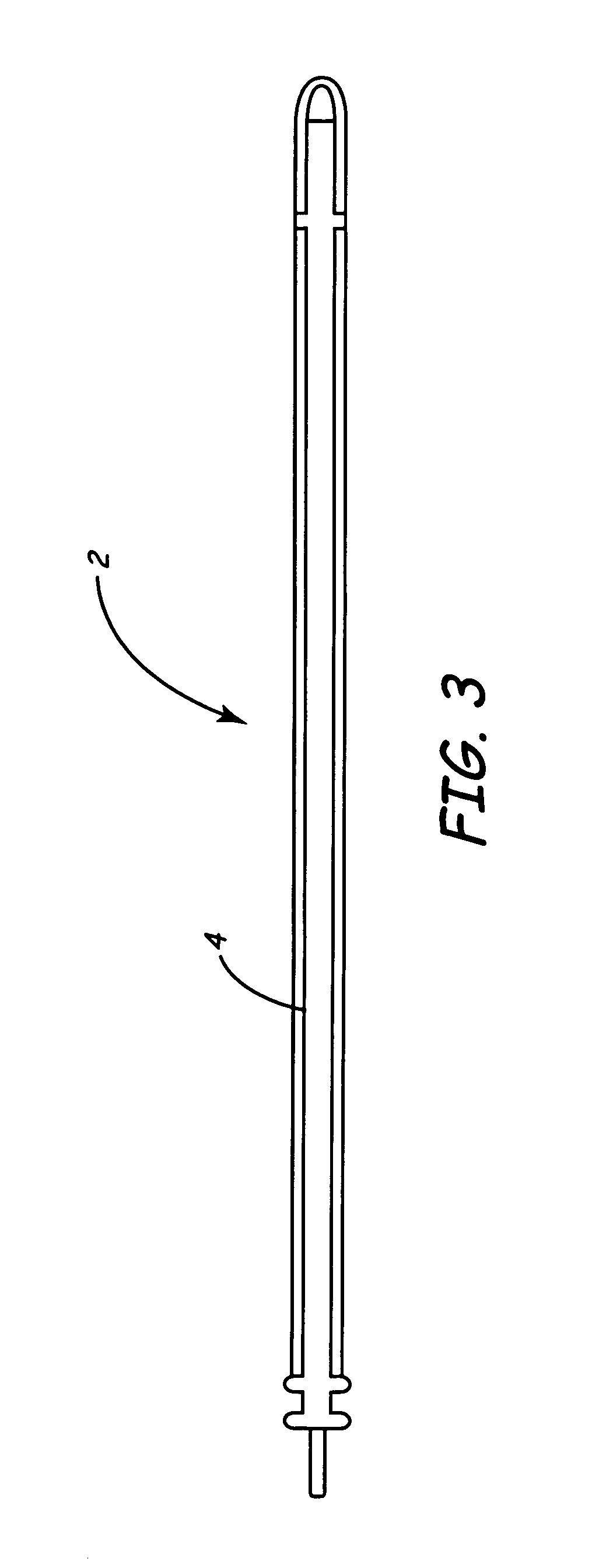Branched polyethylene oxide terminated biomedical polymers and their use in biomedical devices
a biomedical polymer and polymer technology, applied in the field ofbranched polyethylene oxide terminated biomedical polymers and their use in biomedical devices, can solve the problems of ineffective long-term biocompatibility and biostability of implantable biomedical devices, and the current sme cannot provide a sufficiently thought cover, so as to achieve the effect of better coverage of surface modifying end groups
- Summary
- Abstract
- Description
- Claims
- Application Information
AI Technical Summary
Benefits of technology
Problems solved by technology
Method used
Image
Examples
Embodiment Construction
[0012]Reference will now be made in detail to the preferred embodiments of the present invention, examples of which are illustrated in the accompanying drawings, wherein like reference numerals refer to like elements throughout.
[0013]The inventors propose a new kind of surface modifying endgroup for biomedical polymers. Specifically, the inventors proposed using branched polyethylene oxide (PEO) or PEO star molecules to terminate biomedical polymers.
[0014]Using branched PEO molecules to terminate base polymers may significantly increase the density of the functional PEO endgroups on the surface of the implantable medical device. In turn, this may improve biocompatibilty and biostability of the IMD in bodily tissues such as blood.
[0015]FIG. 1 is a schematic view of a base polymer having branched or star polyethylene oxide biologically modifying end units. In FIG. 1, the polymer is represented by a polyurethane chain. Of course, many other suitable polymers work equally as well. At th...
PUM
| Property | Measurement | Unit |
|---|---|---|
| Biocompatibility | aaaaa | aaaaa |
| Surface activity | aaaaa | aaaaa |
Abstract
Description
Claims
Application Information
 Login to View More
Login to View More - R&D
- Intellectual Property
- Life Sciences
- Materials
- Tech Scout
- Unparalleled Data Quality
- Higher Quality Content
- 60% Fewer Hallucinations
Browse by: Latest US Patents, China's latest patents, Technical Efficacy Thesaurus, Application Domain, Technology Topic, Popular Technical Reports.
© 2025 PatSnap. All rights reserved.Legal|Privacy policy|Modern Slavery Act Transparency Statement|Sitemap|About US| Contact US: help@patsnap.com



